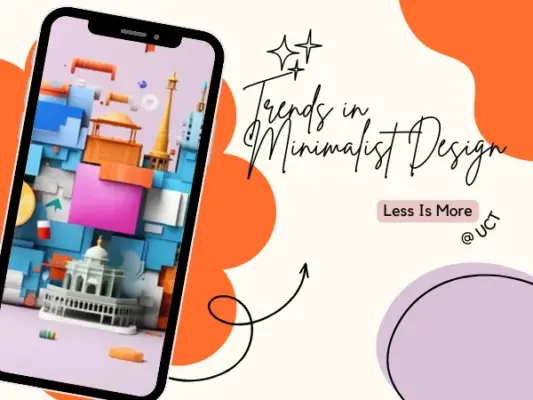
Minimalist design has taken the digital world by storm, with its “less is more” philosophy influencing everything from web design to user interfaces and branding. By focusing on simplicity, clarity, and functionality, minimalist design creates a seamless and intuitive user experience. In this blog, we’ll explore the latest trends in minimalist design, why they are effective, and how you can incorporate them into your projects to create modern, elegant, and highly functional designs.
Why Minimalist Design Works
Minimalist design is all about stripping away unnecessary elements and focusing on what truly matters. This approach not only makes the design visually appealing but also enhances usability. By reducing clutter, users can easily navigate through a website or application, focusing on the key messages and actions that designers want to highlight. Additionally, minimalist design often results in faster load times and better performance, making it a win-win for both aesthetics and functionality.
Key Trends in Minimalist Design
1. Whitespace (Negative Space)
Whitespace, or negative space, is one of the core components of minimalist design. It refers to the empty space around and between elements of a design. The strategic use of whitespace can create a clean, open, and breathable layout, helping users focus on the most important content without distractions. This trend continues to be popular because it enhances readability and gives designs a modern, uncluttered feel.
2. Monochromatic Color Schemes
Minimalist design often favors monochromatic color schemes, where variations of a single color are used throughout the design. This trend is effective because it creates a cohesive and harmonious look while keeping the focus on content. Monochromatic palettes are versatile, allowing designers to play with different shades and tints to create depth and interest without overwhelming the user.
3. Bold Typography
In minimalist design, typography often takes center stage. With fewer visual elements competing for attention, text becomes a powerful tool for communication. Bold, large fonts are frequently used to make statements and guide the user’s eye to important information. This trend highlights the importance of choosing the right typeface and using it strategically to enhance the overall design.
4. Simple and Intuitive Navigation
Minimalist design prioritizes user experience by simplifying navigation. Clear, straightforward menus with minimal options ensure that users can easily find what they’re looking for without feeling overwhelmed. This trend reflects the broader shift towards user-centered design, where simplicity and ease of use are paramount.
5. Flat and Semi-Flat Design
Flat design, characterized by the absence of three-dimensional elements such as shadows or gradients, remains a key trend in minimalist design. However, the trend has evolved with the introduction of semi-flat design, which reintroduces subtle shadows and layers to create a sense of depth without compromising the clean and simple aesthetic. This approach maintains the essence of minimalism while adding a touch of modernity.
6. Minimalist Icons and Graphics
Icons and graphics in minimalist design are often simplified to their most basic forms, using clean lines and geometric shapes. These elements are designed to convey meaning quickly and effectively without adding unnecessary detail. This trend ensures that icons and graphics complement the overall minimalist aesthetic, enhancing usability and visual appeal.
7. Focus on Functionality
The mantra of “form follows function” is a guiding principle in minimalist design. Every element in the design serves a purpose, whether it’s to guide the user, convey information, or enhance the experience. This trend is about more than just aesthetics; it’s about creating designs that are highly functional and user-friendly.
How to Incorporate Minimalist Design Trends into Your Projects
1. Start with a Clear Purpose
Begin your design process by identifying the core purpose of your project. What do you want users to focus on? By defining this, you can eliminate unnecessary elements and ensure that your design is aligned with your objectives.
2. Embrace Whitespace
Don’t be afraid to leave areas of your design empty. Use whitespace to create balance and focus, ensuring that each element has room to breathe and doesn’t compete for attention.
3. Choose a Limited Color Palette
Stick to a monochromatic or limited color palette to create a cohesive and harmonious design. Use variations in shade and tint to add depth and interest without complicating the visual hierarchy.
4. Prioritize Readability
Select typography that is easy to read and complements your overall design. Consider using bold and large fonts to emphasize key messages and guide the user’s eye.
5. Simplify Navigation
Design intuitive and straightforward navigation that allows users to find information quickly. Limit the number of menu items and use clear labels to enhance usability.
6. Focus on User Experience
Keep the user at the center of your design decisions. Every element should enhance the user experience, whether it’s through ease of use, accessibility, or visual appeal.
Conclusion
Minimalist design is more than just a trend—it’s a powerful approach that enhances both aesthetics and functionality. By embracing the latest trends in minimalist design, you can create modern, elegant, and highly effective digital experiences that resonate with users. Remember, in design, less truly is more.